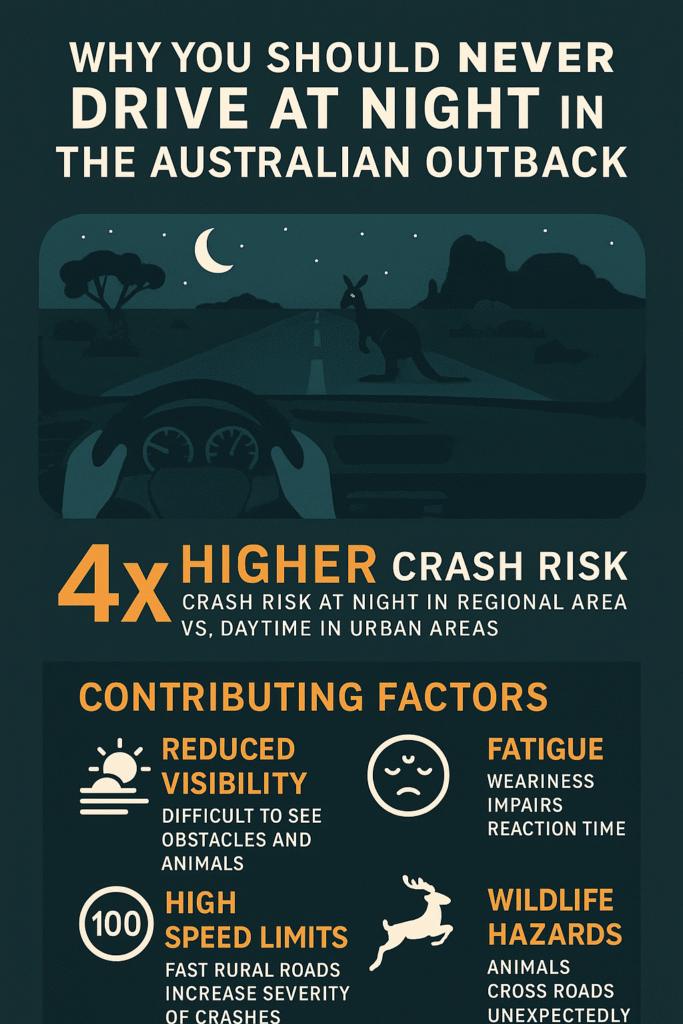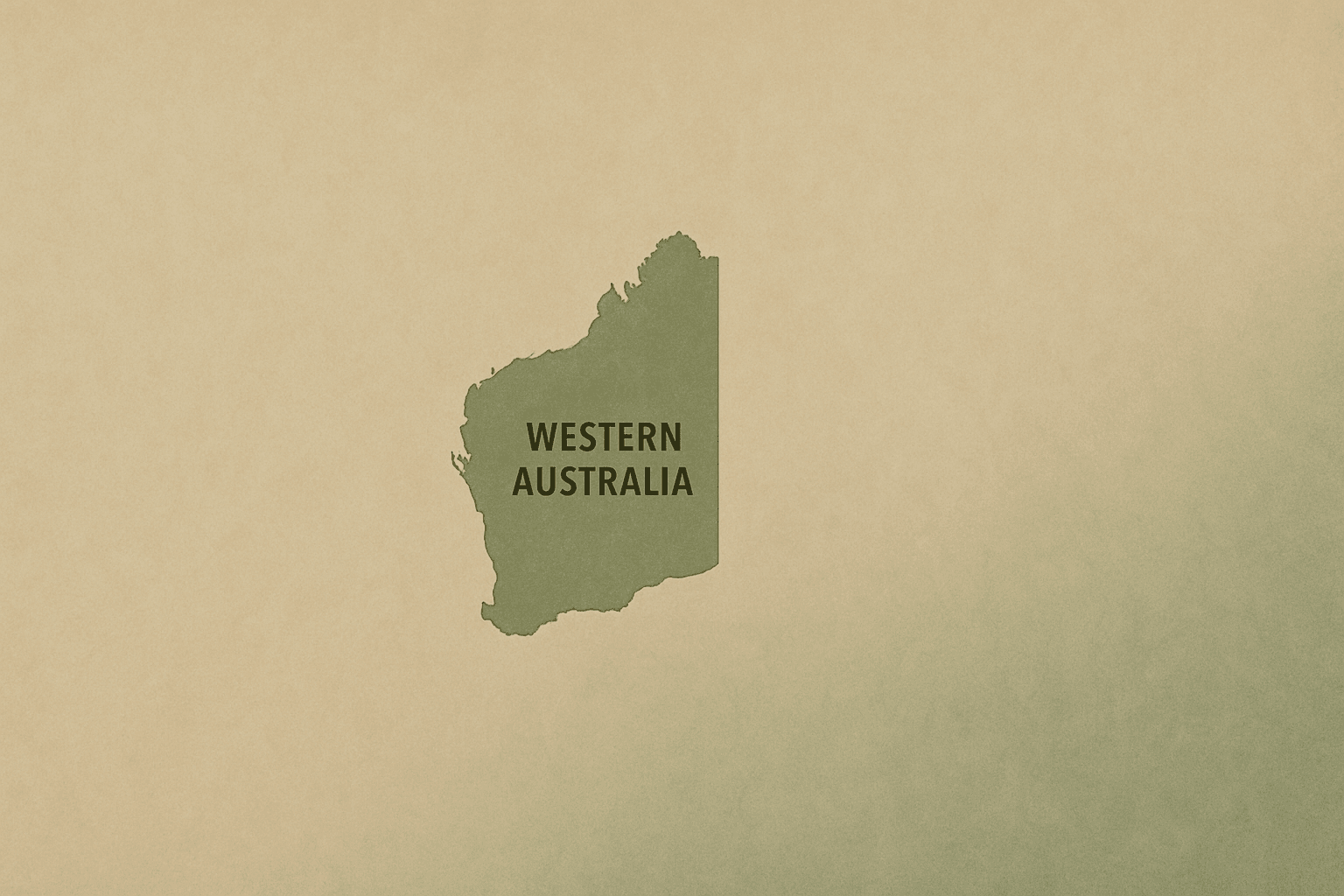Last Updated on May 15, 2025
Planning a road trip across Western Australia?
Picture this: the stars are out, the highway is quiet, and you’re making the most of the cool evening breeze… But as peaceful as it might seem, driving at night in regional or remote parts of Australia could be one of the most dangerous decisions you make on your journey.
In fact, nighttime driving outside urban areas in Australia dramatically increases your chances of a fatal accident. Here’s what every traveler in a campervan or 4WD rental needs to know before hitting the road after sunset.
Nighttime Driving Is Disproportionately Dangerous
Though only 25% of all driving in Australia occurs at night, these hours account for around 40% of road fatalities. That’s an alarming imbalance—and it’s even worse once you leave the safety of the city.
- Fatigue is one of the biggest culprits. According to the Australian Government, drivers with less than five hours of sleep are 4.5 times more likely to crash. Those who’ve had only four hours? A shocking 11.5 times more likely.
- Visibility drops significantly at night. Even with high beams, the reaction time for spotting obstacles, animals, or sudden bends is drastically reduced.
Your risk of a fatal crash increases just by driving in the dark—even if you’re completely sober, alert, and experienced.
Regional and Remote Roads: The Real Killers
Statistically, city dwellers are far safer behind the wheel. In contrast, regional Australians are nearly five times more likely to die in road accidents.
- The death rate is 9.6 per 100,000 in regional areas versus just 2.2 per 100,000 in major cities.
- For remote areas, the risk of being killed on the road is 11 times higher than for drivers in urban zones.
This is not just bad luck. It’s about infrastructure, wildlife, speed limits, and delayed emergency responses.

The Real Reasons Why the Outback Is So Dangerous After Dark
Let’s break it down:
1. Speed Kills – Especially at Night
Many remote roads have default speed limits of 100 km/h, even though they’re single-lane, unlit, and riddled with potholes or gravel patches. That speed might be legal—but it’s not safe.
2. Wildlife Crossings Are a Nighttime Roulette
From kangaroos to cattle, animals don’t check the road before crossing. And they’re incredibly hard to see at night until it’s too late. Collisions with animals are one of the most common causes of outback crashes.
3. Emergency Services Might Be Hours Away
Outback roads can stretch hundreds of kilometres without mobile reception or medical facilities. If you crash at night, help might be a very long wait away—if it arrives at all.
4. Fatigue Sets in Without You Noticing
Fatigue doesn’t feel like a sudden crash of exhaustion. It creeps in, blurs your focus, and slows your reactions. Add a long day of driving and the hypnotic effect of endless dark roads, and it becomes a silent killer.
A Real-World Warning
In 2022, more than 1,200 people died on Australian roads—and a disproportionate number of those deaths occurred in regional and remote areas during night hours.
You’re not just risking your trip. You’re gambling with your life, the lives of your passengers, and your future.
Stay Safe: Our Advice to Every Campervan and 4WD Renter
At OffGrid Campers WA, we care about your safety when you are booking one of our campervan. That’s why we strongly advise:
- Avoid driving after 5:00 PM, especially on country roads or through national parks.
- Plan your route with daylight in mind—leave early, take breaks, and aim to reach your destination before dusk.
- Book campsites in advance so you’re not tempted to keep driving into the night.
- Check your vehicle lighting, tires, and spares before heading into regional areas. All our vehicles at Offgrid Campers WA are well maintained for extra peace of mind.
- Use a Starlink antenna that you rent for emergencies, if included in your rental—many regions lack mobile coverage.
Final Thoughts
The Australian outback is breathtaking—but it demands respect.
Your best views, safest moments, and greatest memories will happen in the daylight.
Don’t let impatience or bad planning turn your trip into a tragedy.
Drive smart. Drive early. And never drive tired or blind in the night.
Sources:
https://www.nrspp.org.au/resources/nrspp-quick-fact-dangers-of-driving-at-night/
https://www.roadsafety.gov.au/nrss/fact-sheets/risky-road-use
https://www.roadsafety.gov.au/nrss/fact-sheets/regional-road-safety
https://www.roadsafety.gov.au/nrss/fact-sheets/priority-focus-areas
https://research.qut.edu.au/carrsq/wp-content/uploads/sites/296/2020/12/Rural-remote-road-safety.pdf
https://www.theguardian.com/australia-news/2023/may/17/regional-australians-five-times-more-likely-to-die-in-car-accidents-report

